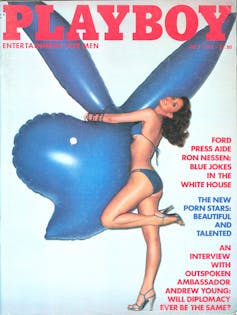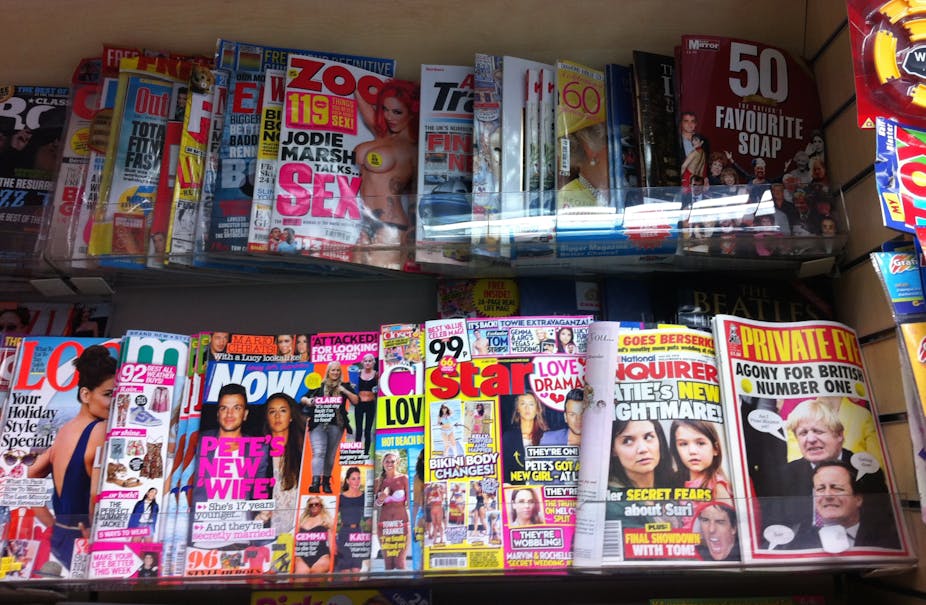The death knell of the lads’ mag has sounded again strongly, with the announced closure of both FHM and Zoo magazine. The decision by publisher Bauer media follows the closure of Nuts in April 2014 and Loaded’s switch to an online-only format earlier this year.
The press release implies that this is a result of the inevitable switch in media habits to mobile and social. Certainly, there remains an online appetite for the type of “laddish” content the titles used to offer, as the success of websites such as The LAD bible reveal. The problem for FHM and Nuts is that these readers no longer want their content from the magazines that first popularised it.
Both titles have seen steep declines from their heyday of selling 700,000 copies of FHM a week and 260,000 copies of Zoo a week in 2004. FHM’s circulation fell to less than 67,000 for the first six months of 2015, 20% fewer than in 2014, while Zoo saw a drop of more than 12%.
FHM was first published in 1985 and went on to have a number of international editions. It described itself as a men’s lifestyle magazine aimed at the young working man and its decidedly male content included a regular round-up of the hundred sexiest women in the world. Launched in 2004, Zoo was aimed at a similar audience.
Although these magazines were known primarily for their raunchy pictures, they also included articles on fashion, health, cars, gadgets and sport. So at least their readers were offered more than just scantily-clad models.
The declining appetite for nudity in magazines was signalled last month when Playboy announced that it was dropping nudity from its magazine and website. This too might be seen as a symptom of the cleaning-up of the newsagent’s shelves – or maybe not.
There are two interlinking factors at play in this change and few encouraging signs that lads are becoming men. First, if men want to look at naked women they just have to type a few words into Google. As journalist Rebecca Reid suggested, to a 19-year-old given the choice between all that’s available online and a few titillating photos in print, the former will always win out. Plus you don’t have to go into a shop to buy it and you don’t have to bother with all the articles.
Linked to this fall in demand is the effect it will have had on the crux of the media business – advertising. As James Brown, the so-called father of lads’ mags who launched Loaded, noted:
The requirements of the Playboy audience have changed. And more pertinently to this, the requirements of the Playboy advertisers have changed.
It may well be that the twenty-something lads of the 1990s have matured while the twenty-somethings of today are looking for something different in the magazines they buy, even if they haven’t moved away from the overtly lad culture epitomised by these titles. Advertisers will always follow what the readership wants.
The internet has, after all, spawned some equivalent offerings. The publisher 65twenty has been extremely successful with websites such as The LAD bible and The SPORT bible. Here, lad culture appears to be alive and thriving. It claims to reach 159m people and is said to be read by half of all British men between 18 and 24 – and 20% of women – of that age group.
Similarly, Playboy has reported a 258% jump in unique visitors to its website since its nudity-free relaunch. The focus is on men’s lifestyle coverage and material that is safe to read at work (SFW), which is where much of their audience is consuming content.

Other changes have worked against the traditional lads’ mag, too. Wannabe models, for example, can now build and control their fan base through social media, without the intermediary of a magazine. There have also been campaigns over the years accusing such magazines of dehumanising women.
So was there an alternative to closing down for these magazines? The option of going free to increase circulation, as the Evening Standard and NME have done, was hardly available to what are essentially top shelf magazines. Then there was the Playboy option of innovating – removing nudity altogether, which it has already done online and will do in its print offering from March 2016, and focusing on quality content instead.
But FHM and Zoo do not seem to have been able to transfer their readership to the internet. Although not mentioned on the Bauer press release, it is believed that the social media sites of the two magazines will also close in 2016.
So the demise of FHM and Zoo only means that silly humour and scantily clad models have gone elsewhere online. Lads of all ages will continue to ogle over naked women. And the lifestyle side of lad culture is alive and well under different brands. Still the good news is that Private Eye’s circulation is its highest since 1986, with not a naked body to be seen.

